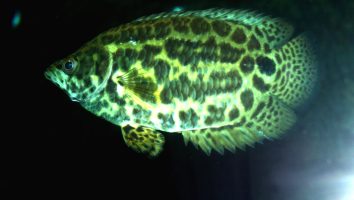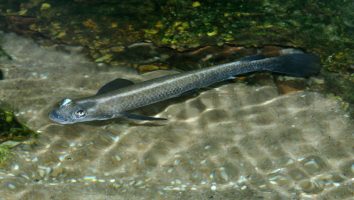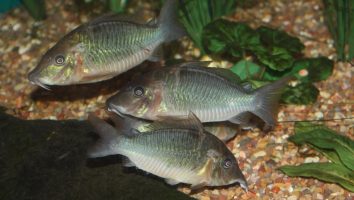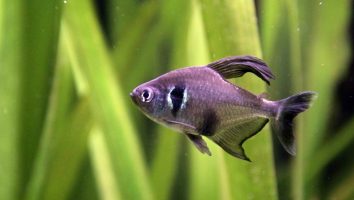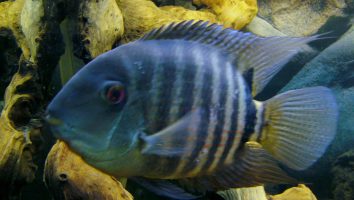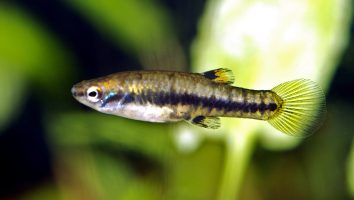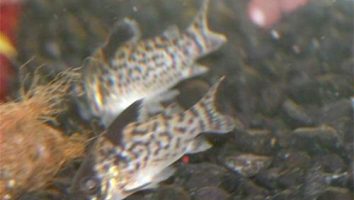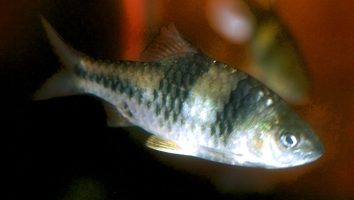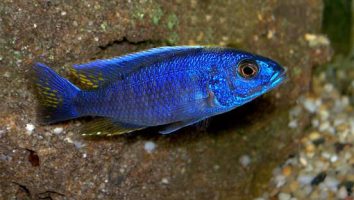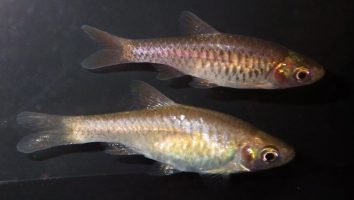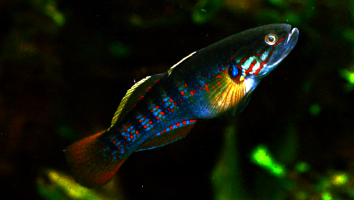The yellow-tailed congo tetra is a beautiful freshwater fish that is relatively easy to care for. They are a peaceful species that does well in community tanks.
This guide will teach you everything you need to know about yellow-tailed congo tetra care. You’ll learn about their diet, size, lifespan, and more!
Table of contents
Species overview
The yellow-tailed congo tetra (scientific name: Aphyosemion bitaeniatum) is a freshwater fish that’s native to the Congo Basin in Africa.
This fish prefers slow-moving water with plenty of plants and vegetation. They are typically found in swampy areas and can even tolerate brackish water conditions.
Yellow-tailed congo tetras are very peaceful fish and do well in community tanks. They are compatible with a wide variety of other freshwater fish species.
The main draw of this fish is its beautiful yellow tail. This really makes them stand out in a fish tank and is sure to catch the eye of anyone who sees them.
Appearance

The first thing you’ll notice about this attractive freshwater fish is their color. As the name suggests, their tail is a beautiful yellow that really stands out against the rest of their black body.
The main part of their body is a deep black color that extends from their nose all the way to the base of their tail. The fins are also black except for, you guessed it, the tail. The tailfin itself is a beautiful yellow color that gradually gets brighter towards the tips.
This yellow color is what really makes this fish stand out in a freshwater aquarium.
This species has a typical tetra body shape. They’re long and thin with a slightly rounded nose. Their dorsal and anal fins are both short and positioned towards the back half of their body.
Their caudal fin is forked and relatively tall. The pectoral fins are also positioned towards the back half of their body and are used for navigation and balance.
One of the most notable things about this species is their eyes. They have large eyes that almost take up their entire head!
Lifespan
The average lifespan of a Yellow-tailed Congo tetra is about 5 to 8 years. As with most fish, there are a number of factors that will impact their life expectancy.
One factor is whether or not they have been bred in captivity. Fish that have been bred in captivity tend to be hardier and have a longer lifespan than those that have been caught in the wild.
The level of care they receive is also a big factor. Yellow-tailed Congo tetras that are well-cared for can live up to 8 years, while those that are not may only live for 5 years or less.
Size
The average size of a Yellow-tailed Congo tetra is 4 inches, with males being slightly larger than females on average. These fish are relatively small, so they don’t need a lot of space to swim and thrive.
Tank
Tank Size
The recommended minimum tank size for yellow-tailed congo tetras is 30 gallons. If you’re keeping them in a school (which we recommend), you should add an additional 5 to 10 gallons per fish. So a school of 5 yellow-tailed congo tetras would need a minimum of a 35 gallon tank.
As with most fish, it’s always better to err on the side of caution and give them a little more space if you can. A 40 or 50 gallon tank would be even better for a school of yellow-tailed congo tetras.
Water Parameters
The Congo tetra is a freshwater fish that comes from the Congo River basin in Africa. In the wild, they inhabit slow-moving waters with lots of vegetation.
To keep your Congo tetra healthy, it’s important to maintain water conditions that are as close to their natural habitat as possible. That includes water temperature, pH, hardness, and alkalinity.
- Water temperature: 72 to 82 degrees Fahrenheit
- pH levels: 6.5 to 7.5
- Water hardness: 4 to 12 dGH
- Alkalinity Levels: 2-8 dKH
What To Put In Their Tank
These fish are relatively easy to care for and don’t have any specific requirements when it comes to setting up their tank.
We recommend using a gravel substrate and including some plants and driftwood for decoration.
You can also add a cave or two for them to hide in if you want. Just make sure that the openings are large enough for them to swim through easily.
As for plants, you can use anything that’s suitable for a freshwater aquarium. Hornwort, water wisteria, and java moss are all great choices.
Common Diseases
The Yellow-tailed Congo Tetra is a hardy fish that doesn’t usually fall ill. However, there are still a few diseases that you should be aware of.
The most common one is ich. This is a parasitic infection that will cause white spots to form on the body of your fish. If left untreated, it can be fatal.
Other potential diseases include Hole-in-Head disease, Fin Rot, and various infections.
The best way to prevent your Yellow-tailed Congo Tetra from getting sick is to maintain a clean and stable tank. These fish are relatively hardy, but they’re not immune to disease.
If you notice any changes in your fish’s appearance or behavior, consult a vet immediately. The sooner you act, the better the chance is that your fish will make a full recovery.
Behavior & Temperament
The Yellow-tailed Congo Tetra is a relatively peaceful fish that does well in a community tank. They are schooling fish, so they should be kept in groups of at least six. They are shy fish and need plenty of hiding places.
They are not aggressive, but they may nip at the fins of slower-moving fish. They are not known to eat plants, but they may uproot them while looking for food.
These fish are active and do best in a tank with plenty of open space to swim. They prefer a tank with a sandy bottom and plenty of plants.
Tank Mates
The yellow-tailed Congo tetra is a relatively peaceful species. They’re not known to be fin nippers or aggressive in general.
This makes them a good candidate for a community tank.
It’s worth noting that these fish are schooling fish. They do best in groups of at least six. If you don’t have enough space for a school, don’t get this species.
Assuming you have a big enough tank, here are some compatible tank mates:
- Neon Tetra
- Cardinal Tetra
- Rummy Nose Tetra
- Congo Tetra
- Clown Loach
- Weather Loach
- Plecostomus
- Corydoras Catfish
Breeding
The yellow-tailed Congo tetra is a beautiful freshwater fish that is becoming increasingly popular in the aquarium trade. While they are not the easiest fish to breed, it can be done with a little patience and knowledge.
The first step is to sex the fish. Females are typically larger and have a more rounded belly. Males have longer fins and a more slender body.
Once you have a group of males and females, you will need to set up a breeding tank. The tank should be at least 30 gallons and should have a lot of hiding places. The water should be soft and acidic with a pH of 6.0.
The next step is to trigger spawning. The best way to do this is to do a large water change. This will simulate the rainy season in the Congo Basin and should trigger spawning.
Once the fish start spawning, you will need to remove the adults. The eggs will be laid on plants and will hatch in about 24 hours.
The fry will need to be fed small live foods at first. You can graduate to baby brine shrimp and other frozen foods as they get bigger.
Conclusion
The Yellow-tailed Congo Tetra is an absolutely gorgeous fish that would make a great addition to any freshwater aquarium. They’re relatively easy to care for and get along well with other community fish.
The only downside is that they’re a bit more difficult to find than some other fish, but we think they’re worth the effort.
If you’re looking for a fish that will add some beauty and interest to your tank, the Yellow-tailed Congo Tetra is a great option!

